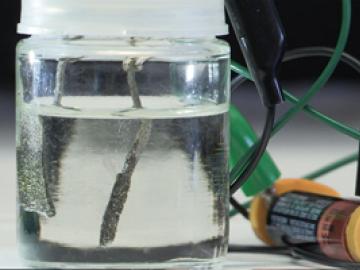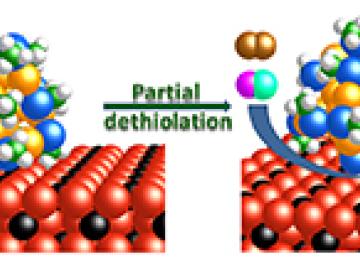Filter News
Area of Research
- (-) Fusion Energy (5)
- (-) Materials Synthesis from Atoms to Systems (8)
- Advanced Manufacturing (7)
- Biological Systems (3)
- Biology and Environment (17)
- Biology and Soft Matter (3)
- Building Technologies (3)
- Chemical and Engineering Materials (2)
- Chemistry and Physics at Interfaces (5)
- Clean Energy (88)
- Climate and Environmental Systems (6)
- Computational Biology (1)
- Computational Chemistry (4)
- Computational Engineering (1)
- Computer Science (3)
- Earth Sciences (1)
- Energy Frontier Research Centers (6)
- Energy Sciences (1)
- Fuel Cycle Science and Technology (1)
- Functional Materials for Energy (8)
- Fusion and Fission (5)
- Geographic Information Science and Technology (1)
- Isotopes (4)
- Materials (81)
- Materials for Computing (12)
- Materials Under Extremes (5)
- National Security (12)
- Neutron Data Analysis and Visualization (2)
- Neutron Science (33)
- Nuclear Science and Technology (27)
- Nuclear Systems Modeling, Simulation and Validation (2)
- Nuclear Systems Technology (1)
- Quantum Condensed Matter (2)
- Quantum information Science (3)
- Renewable Energy (1)
- Sensors and Controls (1)
- Supercomputing (53)
- Transportation Systems (3)
News Type
Media Contacts

A developing method to gauge the occurrence of a nuclear reactor anomaly has the potential to save millions of dollars.

Combining expertise in physics, applied math and computing, Oak Ridge National Laboratory scientists are expanding the possibilities for simulating electromagnetic fields that underpin phenomena in materials design and telecommunications.

Temperatures hotter than the center of the sun. Magnetic fields hundreds of thousands of times stronger than the earth’s. Neutrons energetic enough to change the structure of a material entirely.

ITER, the world’s largest international scientific collaboration, is beginning assembly of the fusion reactor tokamak that will include 12 different essential hardware systems provided by US ITER, which is managed by Oak Ridge National Laboratory.

The prospect of simulating a fusion plasma is a step closer to reality thanks to a new computational tool developed by scientists in fusion physics, computer science and mathematics at ORNL.





A simple new technique to form interlocking beads of water in ambient conditions could prove valuable for applications in biological sensing, membrane research and harvesting water from fog.




